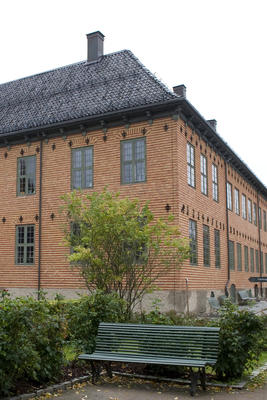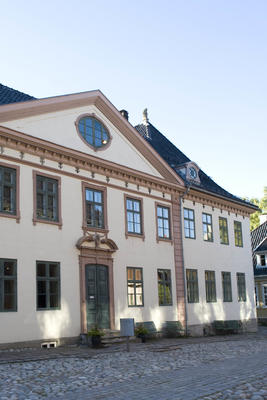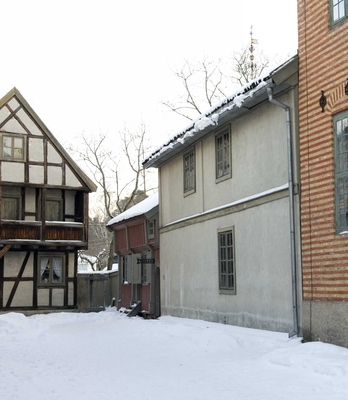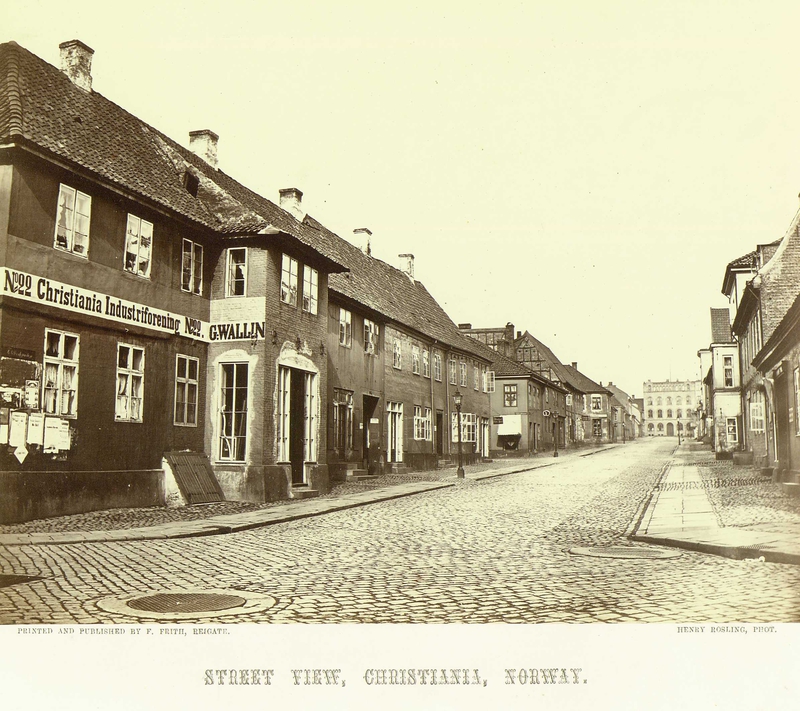Buildings in the new town were to be made of stone or brick, and not of the traditional log construction. People who could not afford to build brick houses were allowed to build half-timbered structures, "in the Danish fashion." Christiania became a little town typical of Northern Europe with 330 properties with buildings of brick, halftimbering and logs. Ramparts were built around the town for defense. These defined the town's dimensions for many years to come. The wealthy lived around Bjørvika, the harbor area. The harbor was continually being filled in and new streets and houses built.
The surrounding countryside was also part of the town. The townspeople could rent fields for grazing and hay. It was forbidden to build dwellings on the fields, only barns were permitted. During the 1700s a number of exceptions to this rule _ were made, and wealthy townspeople built country homes on the outskirts of town
In the center of town, one and two story buildings from the 1600s were little changed until the 1850s. At that time the town was surrounded by railway stations on two sides, by the sea on the third, and by an industrial district on the fourth. Within this area property was valuable, and homes and small businesses were forced out by offices and larger firms. The small buildings were eventually replaced by many storied buildings in the decades around 1900.





